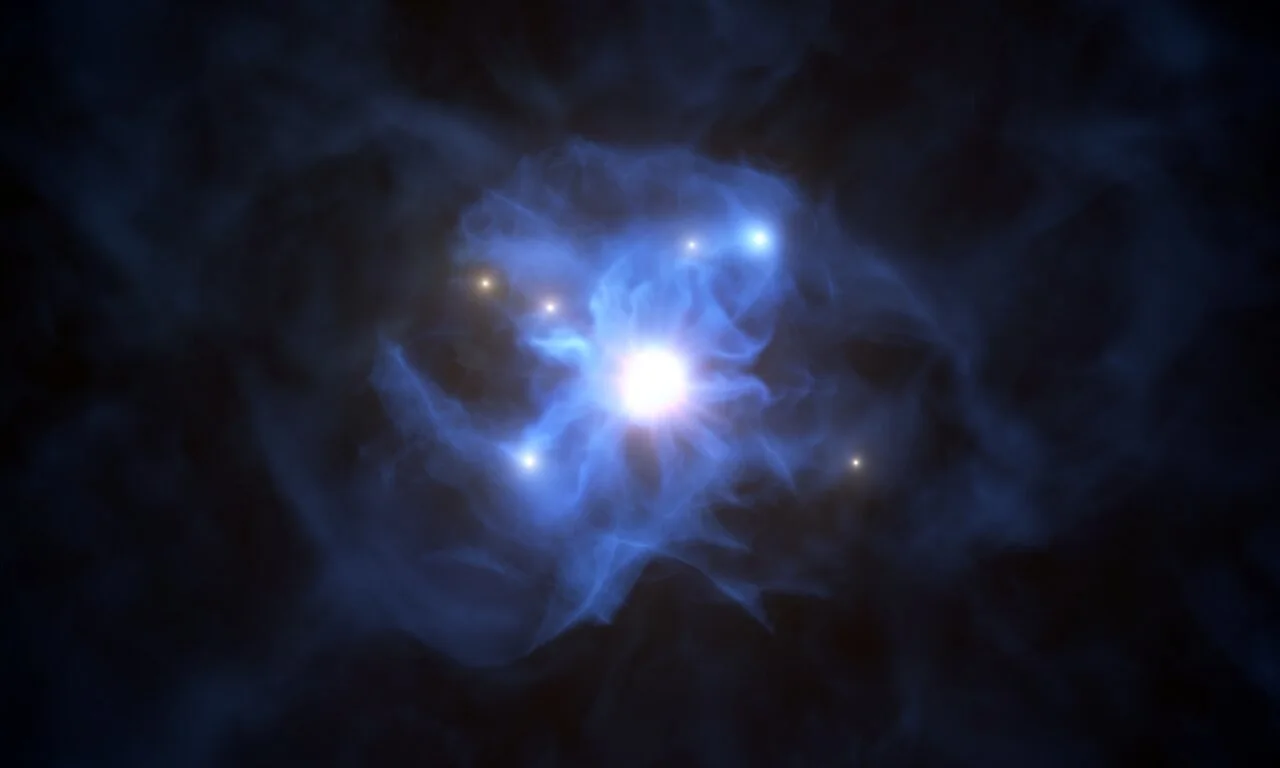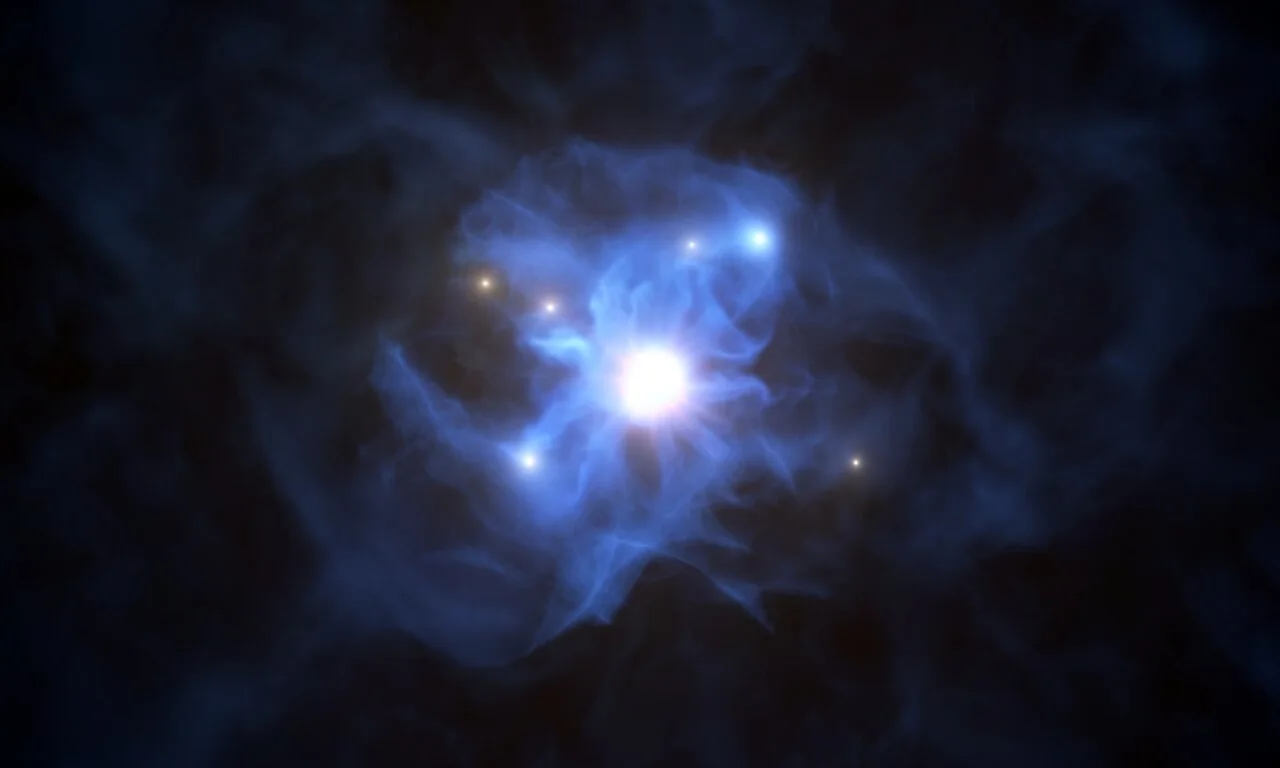
Monster black hole is caught feeding off galaxies trapped in its 'spider's web'
This discovery may reveal how the earliest black holes grew into supermassive giants
Halloween may be unique to Earth, but the cosmos sure offers up some great decorations for this time of year. Astronomers just found a monster black hole feeding off galaxies trapped in the threads of its "spider's web".
Peering back into the earliest times of the Universe, a team of astronomers has made a first-of-its-kind discovery. A bright quasar, captured as it was just a billion years after The Big Bang, has been revealed as a cluster of six different galaxies around an immense, and growing, supermassive black hole. 'Quasar' is short for 'quasi-stellar object'. It is the name astronomers gave to objects that we now know are 'active' black holes, which spit out copious amounts of radiation as it gobbles down matter.
The details of this cosmic web are revealed in a new study published in the journal Astronomy & Astrophysics.

Quasar SDSS J103027.09+052455.0, in this artist's impression, is a collection of six different galaxies trapped in the strands of a supermassive black hole's web, around 300 times the size of our Milky Way galaxy. Credit: ESO/L. Calçada
"The cosmic web filaments are like spider's web threads," study lead author Marco Mignoli, an astronomer at Italy's National Institute for Astrophysics (INAF), said in a European Southern Observatory press release. "The galaxies stand and grow where the filaments cross, and streams of gas - available to fuel both the galaxies and the central supermassive black hole - can flow along the filaments."
The team says that this is the first time they have ever seen such a close grouping of galaxies, so far back in the Universe's history. Also, they believe that what they've witnessed may help explain a persistent mystery about the earliest black holes.
There are two basic types of black holes that astronomers have found. Stellar-mass black holes form when a massive star dies and collapses in on itself. The most extreme of these can 'weigh in' at around 60 times our Sun's mass. Supermassive black holes, which exist at the cores of galaxies, tip the cosmic scales at millions to billions of times the mass of the Sun. The persistent mystery is how these supermassive black holes form.

This artist's impression of a supermassive black hole reveals the different features of these cosmic monsters. Credit: ESO, ESA/Hubble, M. Kornmesser/N. Bartmann
If supermassive black holes are simply swollen, over-fed stellar-mass black holes, how do they grow so large, so quickly? This is especially true of the ones that are in the Universe's earliest galaxies. The first stars to form are thought to have been much larger than any of the most massive known stars. Still, they would not have been large enough to produce a supermassive black hole upon their death.
The 'web' of galaxies feeding SDSS J103027.09+052455.0 indeed contains enough matter to fuel the central black hole's growth to supermassive proportions, the researchers say. As for how the galaxies could have clustered like this, they have ideas for this, too.
According to the ESO: These large regions of invisible matter are thought to attract huge amounts of gas in the early Universe; together, the gas and the invisible dark matter form the web-like structures where galaxies and black holes can evolve.
RELATED: ZOOMING IN ON THE MILKY WAY'S SUPERMASSIVE BLACK HOLE
"Our finding lends support to the idea that the most distant and massive black holes form and grow within massive dark matter halos in large-scale structures," co-author Colin Norman, from Johns Hopkins University, said in the press release. As Norman explained, the physical limitations of today's telescopes are likely to blame for not having seen other clusters like this before.
Future telescopes, such as the ESO’s Extremely Large Telescope, which is currently being built in northern Chile, are expected to give astronomers a clearer picture of the very early universe.
"We believe we have just seen the tip of the iceberg," said co-author Barbara Balmaverde, an astronomer at INAF, "and that the few galaxies discovered so far around this supermassive black hole are only the brightest ones."
Source: ESO











